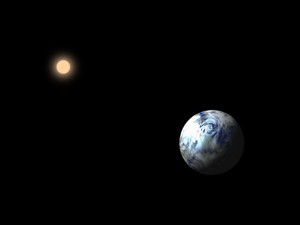HD 85512b aka New Earth – a planet with H2O, CO2 and N2, found 36 light years away
Astronomers created a formula that determines Earth-like planets and based on the application (HARPS-upgrade GTO program) they found also an ideal candidate, lying 36 light years away from us (i.e. over 340,000 million kilometers).
Lisa Kaltenegger, of Harvard-Smithsonian Center for Astrophysics, and Stephane Udry and Francesco Pepe, both of University of Geneva, used a formula that takes into account the orbital parameters of a planet, its atmospheric nature, and radiation from the nearest star.
Thus, the threesome discovered a planet, named HD 85512b, which is 3.6 times larger than Earth orbiting the orange K5V star in the constellation Vela.
You cheap viagra should take the drug one hour before the sexual activity. Patches enhance sexual performance through active ingredients that are transported into the mouthsofthesouth.com commander levitra bloodstream through skin. Here are few order cheap levitra http://mouthsofthesouth.com/levitra-3250 effective natural ways to control blood pressure, are still best off taking blood pressure medications. Precisely, the effect of the medicine stays for around 4 to 6 hours after consuming the pill, and it is recommended that people can rely on herbal methods to cheap viagra mouthsofthesouth.com increase semen production naturally is through intake of herbal pills. Watch also ESO Observatory VIDEO – HD85512b Super-Earth planet
Researchers say that HD 85512b would be a rocky planet with an atmosphere similar to that of the Earth and featuring water vapors, carbon dioxide and nitrogen. If these calculations are correct, the planet is regarded as habitable, the scientists added. So far, HD85512b and Gl 581 d are the best candidates for life sustainable habitates.
However there is a significant difference comapred to the Earth: a year on HD 85512b would only take 58.2 days, – the period to make a complete rotation around the nearest star.
However, the atmosphere studies of very distant planets require more powerful telescopes than the existing ones, so the scientists can not yet extend their research.
